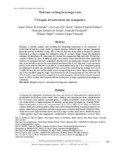Por favor, use este identificador para citar o enlazar este ítem:
http://www.alice.cnptia.embrapa.br/alice/handle/doc/999526Registro completo de metadatos
| Campo DC | Valor | Lengua/Idioma |
|---|---|---|
| dc.contributor.author | ALMEIDA, C. X. de | pt_BR |
| dc.contributor.author | PITA JUNIOR, J. L. | pt_BR |
| dc.contributor.author | ROZANE, D. E. | pt_BR |
| dc.contributor.author | SOUZA, H. A. de | pt_BR |
| dc.contributor.author | HERNANDES, A. | pt_BR |
| dc.contributor.author | NATALE, W. | pt_BR |
| dc.contributor.author | FERRAUDO, A. S. | pt_BR |
| dc.date.accessioned | 2014-11-11T07:08:40Z | - |
| dc.date.available | 2014-11-11T07:08:40Z | - |
| dc.date.created | 2014-11-10 | pt_BR |
| dc.date.issued | 2014 | pt_BR |
| dc.identifier.citation | Semina: Ciências Agrárias, Londrina, v. 35, n. 1, p. p. 259-266, jan./fev. 2014. | pt_BR |
| dc.identifier.uri | http://www.alice.cnptia.embrapa.br/alice/handle/doc/999526 | pt_BR |
| dc.description | Abstract: Estimates of nutrient amounts both shedding and demanding replacement in the maintenance of productivity of fruit trees require studies on element dynamics within the many ecosystem components generally made up of nutrient cycling. Thus, it was the objective of this study to evaluate the nutrient biochemical cycling in a mango tree (Mangifera indica L.) orchard, Palmer variety. Macronutrients [nitrogen (N), phosphorus (P), potassium (K), calcium (Ca), magnesium (Mg), and sulfur (S)] had their contents evaluated in leaves at different stages: new, mature, senescent, and litter. First exploratory analysis was performed for main components which preserve the multivariate structure shown by the data. It was possible to observe the association of new leaves with N, P, K, Mg, and S; senescent leaves and the leaves from the litter were associated to Ca, while mature leaves, to K. As a complement, taking the independent variables into consideration, Tukey test (p?0,01) showed that the averages of N, P, and Ca differ between the new and the mature leaves; average of Mg in new leaves differs from the others, and S does not differ along the stages. Also observed was the re-translocation of 41%, 63% and 57% of N, P, and K, respectively, when comparison was made among the contents of the elements in mature leaves as well as in litter, which indicates that the biochemical cycling is important for the mango tree cultivation. [Ciclagem de nutrientes em mangueira]. Resumo: A estimativa das quantidades de nutrientes que saem e que devem ser adicionados para a manutenção da produtividade das frutíferas requer estudos sobre a dinâmica dos elementos nos vários compartimentos do ecossistema, o que compõe, em termos gerais, a ciclagem de nutrientes. Assim, objetivou-se com este estudo avaliar a ciclagem bioquímica de nutrientes em um pomar de mangueiras, variedade Palmer. Foram determinados os teores de macronutrientes (N, P, K, Ca, Mg e S) em folhas em diferentes estádios: folhas novas, folhas maduras, folhas senescentes e folhas do folhedo. Inicialmente, aplicou-se a análise exploratória de componentes principais que preserva a estrutura multivariada contida nos dados. Verificou-se a associação das folhas novas com N, P, K, Mg e S; folhas senescentes e do folhedo com Ca e folhas maduras com K. Em complemento, considerando as variáveis independentes, o teste de Tukey (p?0,01) mostrou que as médias de N, P e Ca diferem entre as folhas novas e maduras, a média de Mg das folhas novas difere das demais e que o S não difere entre os estádios. Foi observada a retranslocação de 41, 63 e 57% de N, P e K, respectivamente, quando se comparou os teores dos elementos em folhas maduras e em folhas do folhedo, indicando que a ciclagem bioquímica é importante para a cultura da manga. | pt_BR |
| dc.language.iso | eng | eng |
| dc.rights | openAccess | eng |
| dc.subject | Biochemical cycling | pt_BR |
| dc.subject | Ciclagem de nutriente | pt_BR |
| dc.subject | Ciclagem bioquímica | pt_BR |
| dc.subject | Main components | pt_BR |
| dc.subject | Cycling | pt_BR |
| dc.title | Nutrient cycling in mango trees. | pt_BR |
| dc.type | Artigo de periódico | pt_BR |
| dc.date.updated | 2014-11-11T07:08:40Z | pt_BR |
| dc.subject.thesagro | Mangifera indica | pt_BR |
| dc.subject.thesagro | Manga | pt_BR |
| dc.subject.nalthesaurus | Mangoes | pt_BR |
| dc.subject.nalthesaurus | Nutrients | pt_BR |
| riaa.ainfo.id | 999526 | pt_BR |
| riaa.ainfo.lastupdate | 2014-11-10 | pt_BR |
| dc.identifier.doi | http://dx.doi.org/10.5433/1679-0359.2014v35n1p259 | pt_BR |
| dc.contributor.institution | Cinara Xavier de Almeida, Universidade Federal de Uberlândia - Monte Carmelo, MG, Brasil.; José Luiz Pita Junior, Universidade Estadual Paulista “Julio de Mesquita Filho”, UNESP/FCAV, Jaboticabal, SP, Brasil.; Danilo Eduardo Rozane, UNESP - Campus de Registro, Registro, SP, Brasil; HENRIQUE ANTUNES DE SOUZA, CNPC; Amanda Hernandes, CATI - Batatais, SP, Brasil.; William Natale, UNESP/FCAV - Jaboticabal, SP, Brasil; Antonio Sergio Ferraudo, UNESP/FCAV - Jaboticabal, SP, Brasil. | pt_BR |
| Aparece en las colecciones: | Artigo em periódico indexado (CNPC)  | |
Ficheros en este ítem:
| Fichero | Descripción | Tamaño | Formato | |
|---|---|---|---|---|
| apNutrient.pdf | 277.12 kB | Adobe PDF |  Visualizar/Abrir |









